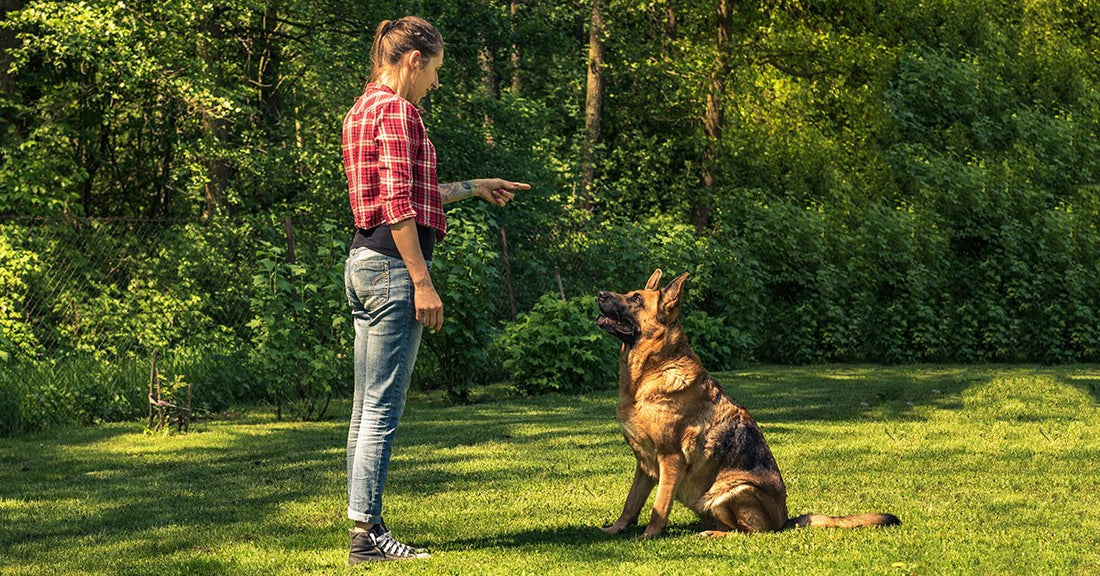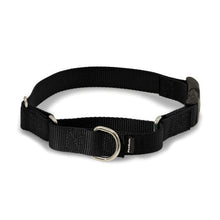6 Common Dog Training Mistakes

Most dog owners are not professional dog trainers, yet we try to train our dogs to the best of our ability. Most of our successful training comes from lots of years of dog ownership or taking the time to learn how to train our dogs.
There are many ways to train dogs, yet most people can agree, learning to communicate with your dog and rewarding desired behavior creates a much better pet then fear or punishment-based training.
Sadly, according the ASPCA, approximately 7.6 million companion animals enter animal shelters nationwide every year. Of those, approximately 3.9 million are dogs and 3.4 million are cats.
While most dogs in shelters are great dogs, many simply lack training and are sometimes overlooked for that reason alone, which contributes to the 1.2 million dogs that are euthanized each year.
While lack of training certainly is not responsible for every dog that enters the shelter, we do shortchange our dogs by not providing training and some new dog owners don’t realize how much time it takes to transform a dog into a well-behaved great companion and friend. Since dogs don’t come with instructions, it is up to us to provide the training they need.
Some common dog training mistakes include:
1. Not training a dog to heel.
Training a dog to heel is one of the most important things you can do for your dog. Many dog owners give up when their dog continues to pull on the leash and act unruly in public. If you have a dog who strains at the end of the leash, your dog is at risk of damaging his throat and trachea not to mention, it’s dangerous for you. Teaching a dog to walk nicely on a leash takes hours of practice and by investing in a harness or gentle leader, you will have more control over your dog while you work on heeling.
2. Giving up on a dog.
Teaching a dog how to behave in your house, car, around guests takes practice and reinforcement. Depending upon the dog, some dogs will need to be reminded a hundred times before they get it. When owners get frustrated after trying to unsuccessfully train their dog to do something, they often just quit or may even begin to punish or intimidate their dog for being a dog and engaging in doggy behavior. Being prepared to positively reward good behavior while teaching your dog what is expected will go a long way to creating the dog you want. Punishment, intimidation, and yelling just creates insecure, confused dogs that can develop more problems.
3. Labeling the dog, a bad dog.
“My dog is just a bad dog, or “my dog just acts like this to annoy me” are common excuses given by people who have done very little to train their dog. There is a saying; “there are no bad dogs, just bad owners,” which is both right and wrong. Being a bad owner indicates a person is deliberately trying to harm their dog when usually it is just a simple matter of lack of understanding, time and training ability. By investing some time in a class, carving out time in a busy schedule, or even things as simple as providing a dog with more exercise can go a long way creating the good dog that you want.
4. Overlooking the benefit of exercise.
Many training and behavior problems are due to a bored dog. Unless you own a couch potato, if your dog is not getting enough exercise and mental stimulation, you will have problems-especially with destructive chewing. Incorporating exercise into your training routine is an important step that some owners overlook. It is said, “A tired dog is a good dog” and no truer words were ever spoken.
5. Slacking off on rules.
Some owners find themselves at odds with their once well-behaved dog. This is sometimes due to allowing the dog to get away with behaviors that were once forbidden. If you don’t want your dog to do a particular behavior, such as jumping on the couch or people, don’t slack off on reinforcing the rules. This only teaches your dog that it is sometimes okay to do these things and causes confusion.
6. Believing a dog is too old.
Old dogs can learn new tricks-lots of them. Just because a dog is getting gray around the muzzle does not mean they don’t require training or worse, can no longer be trained. Aging dogs can benefit from training, just as young dogs. Training an older dog helps keep the dog active and mentally stimulated. Take some time to train your old dog and they will love you for it and you will be helping them live the best life possible.
























